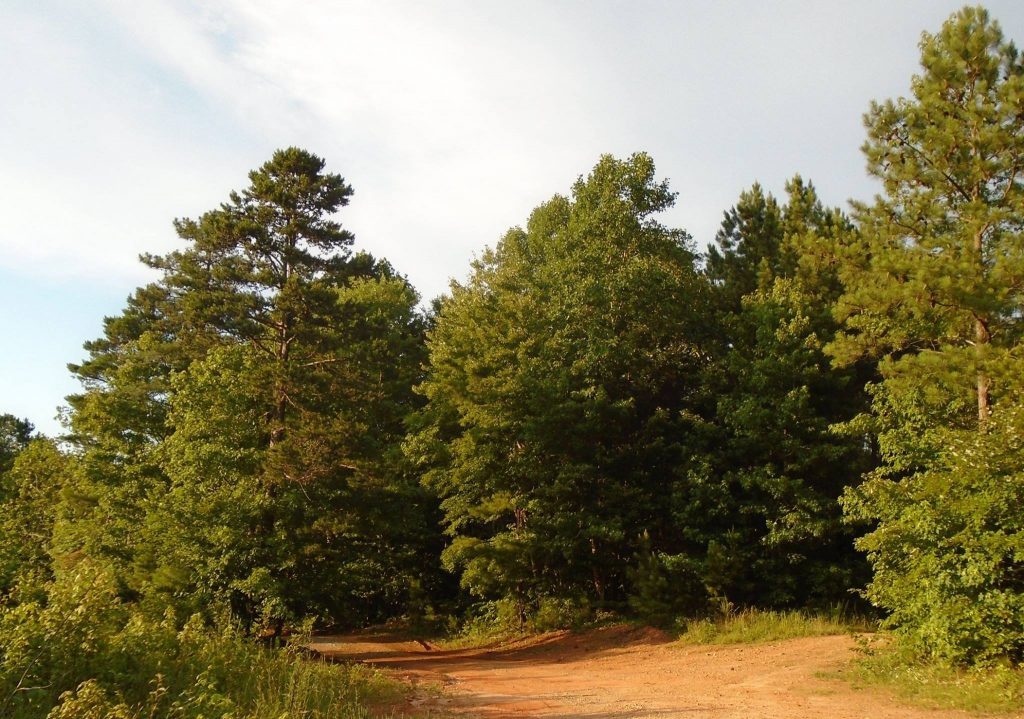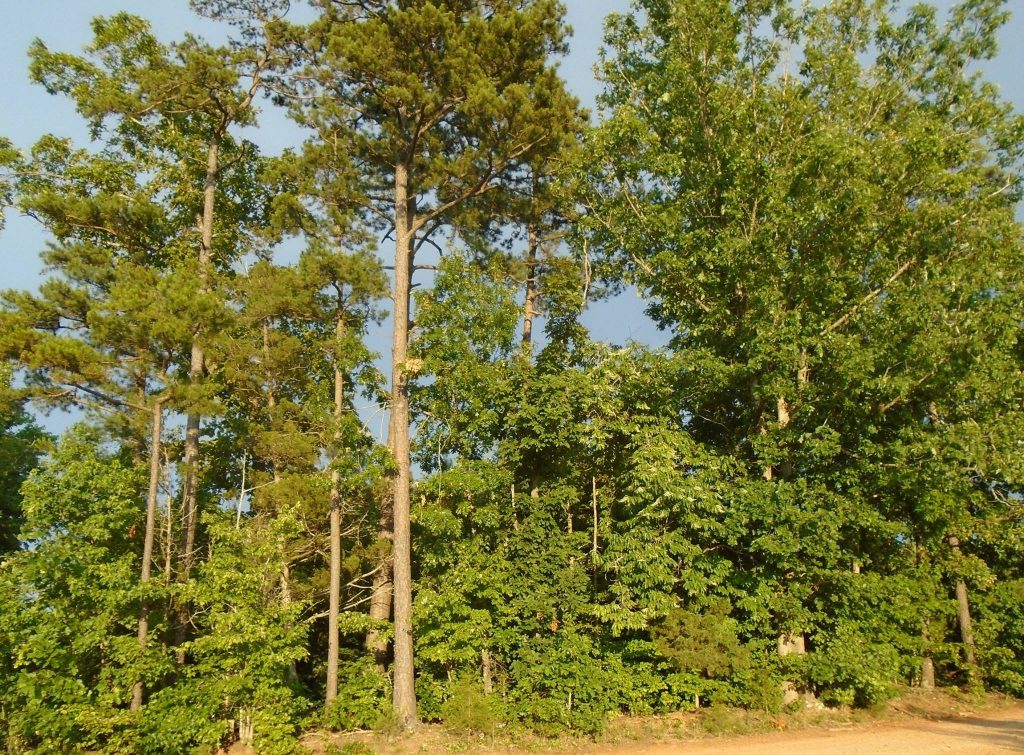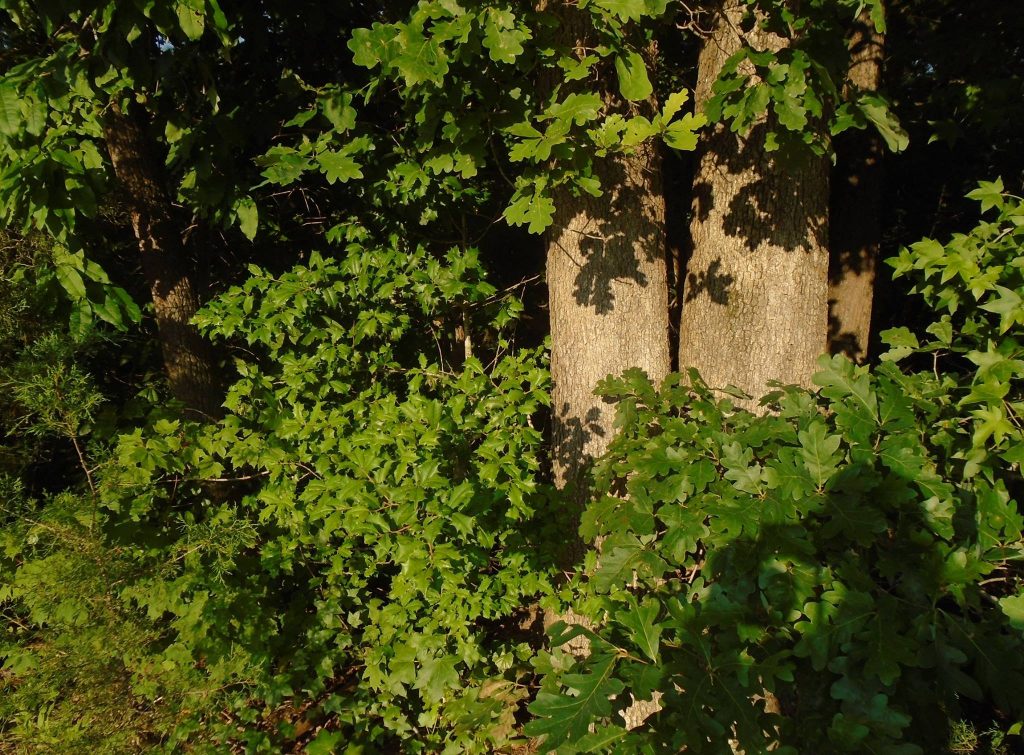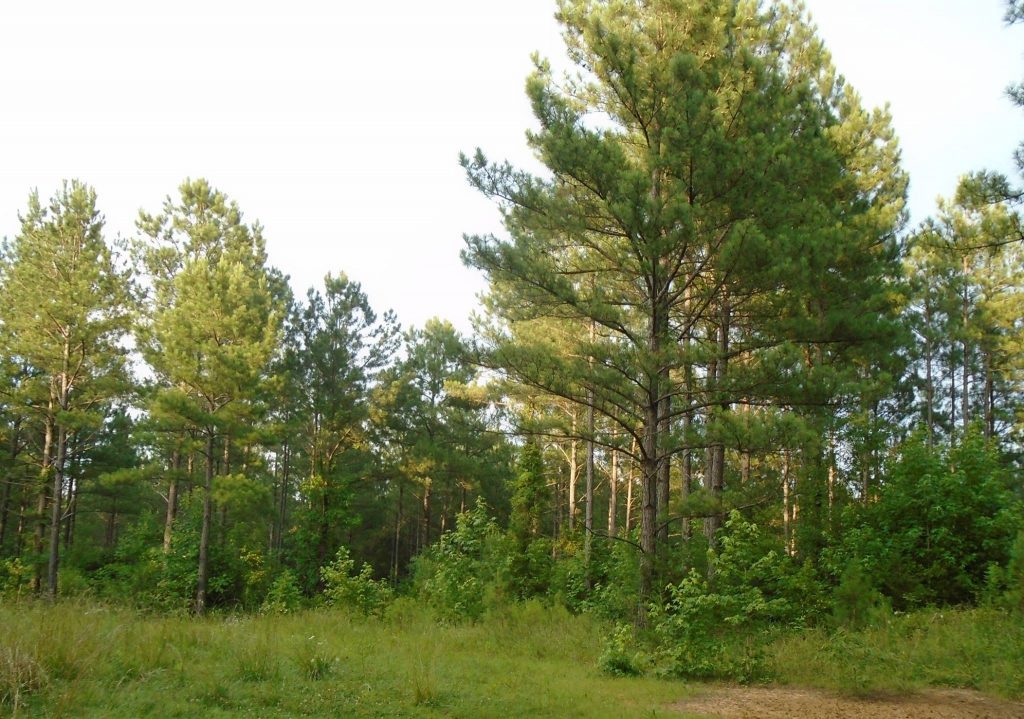Continuing with notes from my recent forest visit.
I have no plans to do much this year except manage the vines and brush. Next year, early in the year, I plan to burn under the 2012 generation longleaf and we will second thin about 80 acres on the Freeman farm late in the year.
Thinking farther ahead, I want to try some shortleaf on the Brodnax place. Shortleaf is the most widely distributed pine in the U.S. but it gets less respect. It grows slower than loblolly and does not have the cache of longleaf. Like longleaf, it is fire dependent, but its ecology is different. As seedlings, longleaf burns to the nub and then regrows. Shortleaf burns to the ground and then regrows. I think it is the only pine to do that.
My pictures show some of the contrast. In the first picture you see shortleaf on the left and loblolly on the far right. Some hardwoods are in the middle. Next is what I like to think of as an “Old Virginy” grove. It has some big shortleaf, native hardwoods like a variety of oaks and gum, and under-story trees like holly. Nobody has cut that for a while and I will not either, but you can see the natural succession. The pines will be gone when the current generation dies. Picture #3 is a closer look and picture #4 is a view of the maturing loblolly in front of a wildlife plot. Our land has these things interspersed in the forests, usually less than an acre, creating the forest-edge communities wildlife likes.




